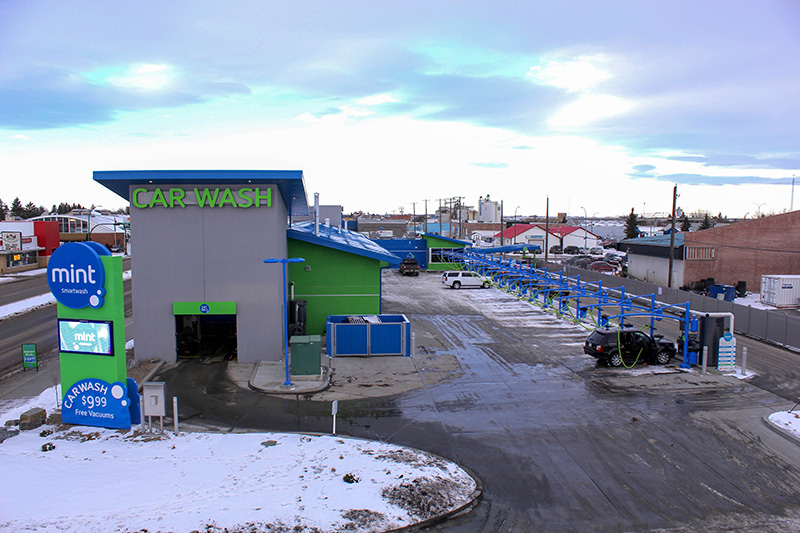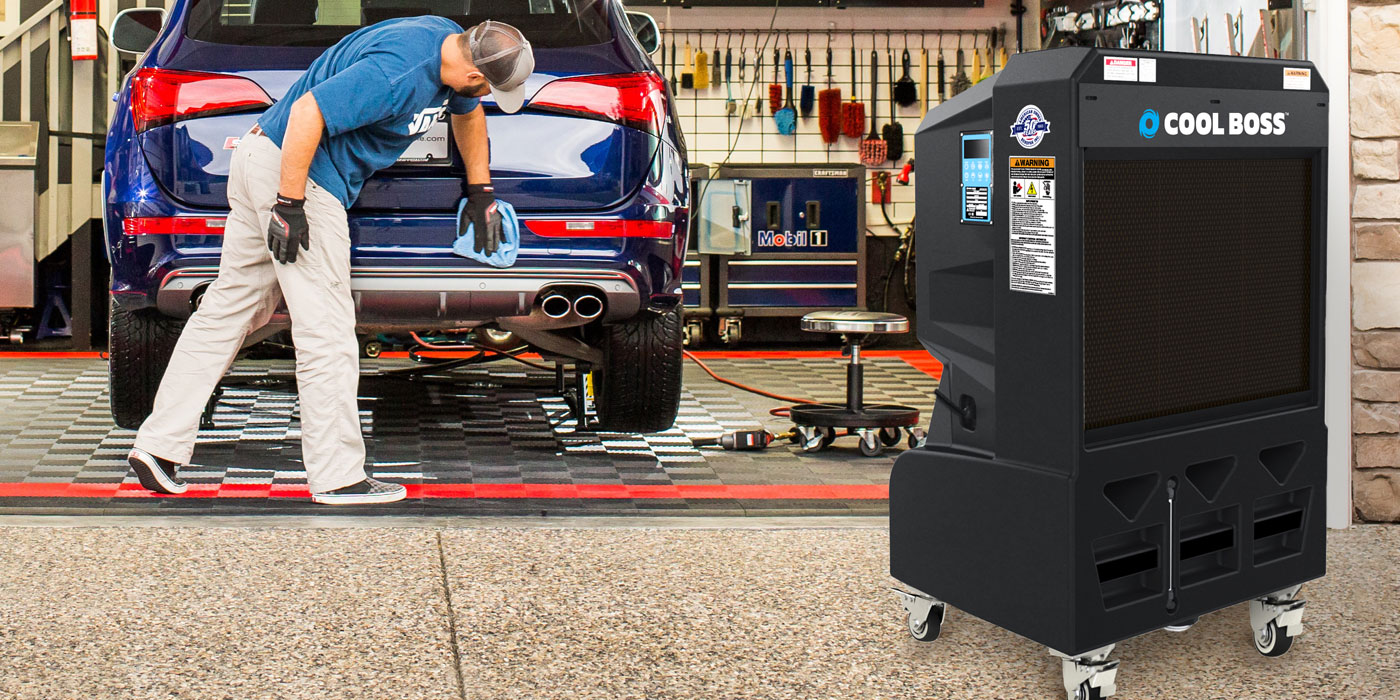There are a number of factors an operator can overcome when working to develop a lucrative carwash location. Competition, labor disputes and equipment problems are a sample of the difficulties that can be addressed through preparation, industry education and old-fashioned hard work. Unfortunately, Mother Nature provides a number of challenges that can be harder for a carwash owner to defeat.
Summer hurricanes, extended droughts and crippling cold weather have all caused carwashes to shut down and lose money over the course of the industry’s history. As the summer months fade and fall begins, savvy operators know that frigid weather is just around the corner. Now is the time when proactive carwash owners should make operational changes and update their sites to prevent problems during winter’s bitter, freezing temperatures.
Often, equipment experts can provide maintenance steps and preparation recommendations for effective and safe carwash operation in cold winter weather. Upkeep instructions can address many of the most important wash areas — entrances, tunnels, bays, vacuum stations and more. Also, modern heating equipment can now be utilized in many tunnels and bays as added insurance against winter freeze-ups and dangerous, icy conditions. Learn even more ways to weather-proof a site before the winter doldrums arrive.
Today’s heating options
Cold weather frequently kills any chance of potential customers washing vehicles in their driveways. Yet, road treatments applied to melt ice and snow can create rust and damage on cars, trucks and SUVs. For these reasons and others, the winter months can be the busiest time of year for some carwash locations. Thankfully, a number of heating options are available to operators today to keep tunnels and bays warm, inviting and operational.
Having additional heaters in the tunnel or bay allows a location to stay open even on colder days when floor heating systems alone cannot keep up, according to Sabrina Shrack with Airlift Doors. Further, all equipment, including the wash equipment, doors and dryers, will operate more efficiently without the ice buildup caused by the freezing temperatures common in a non-heated building.
That said, owners should be sure that any heating equipment installed is designed and manufactured to withstand the harsh carwash environment. “Standard industrial heaters aren’t designed to be used in a wet, chemical-filled setting,” Shrack explains. “Be sure that the heating system you choose was engineered to withstand this unique application.”
Shrack recommends radiant, energy-efficient infrared heating systems. These systems can include stainless steel tubes, a silicone-sealed control housing, rain-tight electrical attachments and BTU (British thermal unit) ranges from 75,000 to 150,000. The heater lengths can range from 20 feet to 60 feet and offer options for 90-degree and U-bend configurations, depending on a site’s specific needs.
These radiant, stainless steel model heaters built for a carwash are a good choice because they are energy-efficient and they include stainless steel components with water-tight attachments. Radiant heat has become increasingly popular in the car care industry compared to other system types, due to the heaters’ higher efficiency and longevity, Shrack notes.
Business benefits
What are some additional benefits for operators who choose to install extra heating equipment in their wash bays or tunnels? Shrack states that radiant heaters eliminate the need for cold weather carwash tools like weep systems. Next, the heaters provide the ability to keep a wash open and to wash cars during colder periods without the hassle of ice buildup.
Reducing the need to operate during periods of heavy ice buildup benefits a wash by preventing additional wear and tear on equipment, creating higher revenues in winter months and increasing overall customer satisfaction. At the same time, an owner can expect reduced maintenance costs on equipment and increased equipment longevity, according to Shrack.
“Since carwash heating systems minimize ice buildup on equipment, building surfaces and vehicles being washed, customers can be assured that they get a quality wash when they need it,” Shrack continues. “Equipment that is subject to freezing temperatures can fail, or its effectiveness can be reduced. By heating your carwash, you are helping to make sure your equipment performs to your customers’ expectations.”
Heater upkeep steps
When it comes to heater maintenance and upkeep, there are recommended steps to take before cold weather arrives as well as during the months of cold-weather operation. Before freezing temperatures are an issue, Shrack recommends turning on the heater and running carwash doors to make sure everything is in working order. A good checklist for a heater inspection includes the:
- Blower motor
- Exhaust vents
- Combustion air intake
- Burner
- Wiring
- Gas connection
- Reflectors.
Next, another visual examination of the heater is important to make sure the fresh air inlet and exhaust vent are free of debris that may have collected, Shrack notes. Also, look over the radiant tubes and reflectors to make sure there is no damage or dirt accumulation. Finally, testing the thermostat is important to confirm it will change with any adjustments, and the heater will turn on and shut off properly.
“Make sure your heater’s components are free of dirt and debris, sealed tight with no leaks and corrosion-free,” Shrack says. “Also, make sure all wiring and gas connections are properly secured and tightened.”
Winter and wash vacuums
Turning to other types of equipment in the carwash, Steve Lieneman, vice president of sales and marketing for Vacutech, states that an operator should notice little to no change in a vacuum system’s operation during cold weather. Cold weather will not significantly impact a central vacuum system, so there are no major steps specifically for winterization that an owner or manager needs to take.
Even so, after busy summer and fall seasons, it is a good idea to use a slower time period to perform routine maintenance on central vacuum systems. This will ensure a system’s optimal performance and longevity. Lieneman notes that an operator should always start by consulting the vacuum system’s specific instructions.
Related: Vacuum performance troubleshooting
“Late autumn is an ideal time to clean or replace your vacuum system’s filter bags,” Lieneman reveals. “Much like your own vacuum at home, using clean or new vacuum filters improves suction and system performance. Consult with your vacuum system provider about how to clean or replace filter bags.”
Generally, an operator should clean bags quarterly and install new ones annually, according to Lieneman. Carwashes with heavier traffic should clean and replace bags more often.
Important vacuum tasks
Next, an owner should check his or her vacuum system for leaks. Any issues with leaks can have a significant negative impact on system performance. Lieneman states that operators should pay particular attention to gaskets, pipe connections and tool holders, as these are the most common locations for leaks.
“Listening for hissing and whistling sounds as you walk the entire length of the vacuum system is the best way to identify the source of any system leaks,” Lieneman explains. “Replacement of worn gaskets and a fresh application of silicone to pipe junctions may be all you need to address common system leaks.”
It is always a good idea to keep vacuum lines clear and free of debris as well. This is particularly important during winter when melted snow and ice are more commonly introduced into the vacuum system. This moisture mixed with normal dirt and debris can create mud in the vacuum piping, which may cause restrictions that affect system performance, Lieneman notes.
For his final two tips, Lieneman suggests that, if a vacuum turbine has serviceable bearings, one should be sure to grease them prior to winter. Lastly, operators should remember that PVC piping can become brittle in cold temperatures. If an owner or manager needs to work on PVC vacuum lines during cold weather, he or she should be sure to take extra care to prevent damage.
Michael Rose is a freelance contributor.














